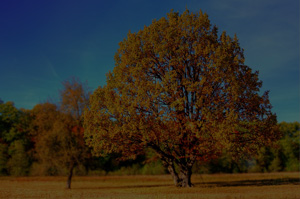
Trees will clean your stale indoor air and add a pop of color/green to a white-out winter. Fortunately, trees grow surprisingly well indoors with the correct care and conditions. This guide will take you through choosing which tree is correct for your home, planting it, and how to take care of it!
Tips For Planting
-
Choose a pot that is relevant to the size of the tree
-
As the tree grows, change the size of the pot until your tree is the size you want it
-
Use a pot with drainage holes to prevent overwatering
-
If you have pets, research to make sure that the tree you choose is not poisonous to them
-
Use high-quality soil to ensure the best growth and drainage
Types of Trees That Grow Well Indoors
Below is a list of popular options for planting trees in your home. A lot of these trees listed are considered bonsai trees or ficus trees, which are becoming very prevalent for decoration purposes.
Fiddle Leaf Fig
Characteristics: Tall, large green leaves
Preferred Condition: Bright light with no drafts
Care Tips: Water when the soil feels dry and watch for bugs
Norfolk Island Pine
Characteristics: Short, green pine needles
Preferred Condition: Medium to bright light
Care Tips: Water enough so that the soil is always moist
Yucca
Characteristics: Sword shaped leaves, wide woody stems, can come in shades of green, blue, yellow, white, or cream
Preferred Condition: Sun to part shade
Care Tips: Don’t need much water, don’t keep in cold temperatures
Parlor Palm
Characteristics: Green, long, thin leaves
Preferred Condition: Can live in low light and humidity
Care Tips: Use a container with drainage holes, palms develop root rot if the soil stays wet too long
Corn Plant
Characteristics: Thick trunk, striped green leaves, grow to be about 6ft tall
Preferred Condition: Bright light and moderate humidity
Care Tips: Let the top dry out before watering again
Madagascar Dragon Tree
Characteristics: Tall, windy trunk, green pointy leaves, reach about 8ft tall over time
Preferred Condition: Bright, filtered light. Direct sunlight will burn the leaves
Care Tips: Keep the soil slightly moist, keep away from pets- the leaves are poisonous to them
Ficus
Characteristics: Tall, windy trunk, bright and bushy leaves
Preferred Condition: Medium to bright light
Care Tips: Water when the top of the soil is dry, prune them to keep a nice shape
Ponytail Palm
Characteristics: Thick trunk, long curvy leaves
Preferred Condition: Medium to low light
Care Tips: Apply a houseplant fertilizer in the once in the spring and summer, does not need to be watered often
Dracaena Anita
Characteristics: Tall trunk, green pointy leaves
Preferred Condition: Bright light and high humidity
Care Tips: Mist it often if your home is dry and keep it watered
Rubber Tree
Characteristics: Fast-growing, rubber-like leaves
Preferred Condition: Bright, filtered light
Care Tips: Water regularly, give it liquid fertilizer while it is growing, re-pot yearly until it has reached your desired size
Fishtail Palm
Characteristics: Leaves resemble fins and fishtails
Preferred Condition: bright light, warm temperature, high humidity
Care Tips: Keep them near a humidifier, water regularly
Majesty Palm
Characteristics: Thin, fan-like leaves
Preferred Condition: Medium to bright light
Care Tips: Keep soil moist but not wet
Money Tree
Characteristics: Rich green leaves
Preferred Condition: Bright light
Care Tips: Water regularly
If there is another tree that you are considering planting, be sure to consult with your florist to learn about the conditions it thrives in.
Overall Tips For Care
-
Check your tree regularly for pests
-
Don’t move your plants too often, they acclimate to their surroundings
-
When watering, avoid the foliage
-
Dust the foliage of your tree regularly with a damp cloth
-
Give your plant new soil at least once a year
-
Use room temperature water
Common Problems
-
Under-watering or over watering
-
Too much or too little humidity
-
Too much or too little light
-
Relocation or repotting
-
Drafts
-
Change in temperature (too hot or cold)
-
Pests
Having trees in your home can really brighten up the winter months. Now that you have learned all about how to plant them, use your green thumb and get planting!











